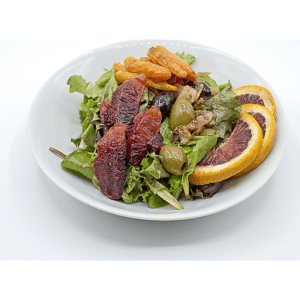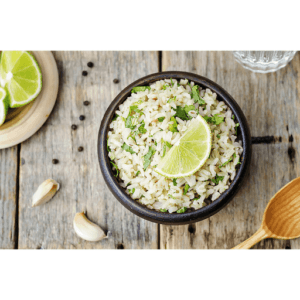The big, wide world of citrus extends far beyond the standard navel orange, lemon and lime. The citrus family tree starts with just three varieties, each with its own flavor profile. Over time, there have been hundreds of different offspring. Many of these varieties are available for very short periods of time once a year, and we are proud to bring several of them in for you to try and add a little added zing to your table.
Lemonade Lemons
Lemonade lemons are a hybrid cross between lemons and mandarins. They are common fruits eaten plain, right out of the hand in Australia and New Zealand. They are juicy, sweet, and can be used to make wonderful, sugarless lemonade or as a refreshing cocktail additive.
Ruby Tango Mandarins
The ruby tango mandarin boasts a tangy, citrus, berry blast! It’s full of juice, and is a natural cross between the blood orange and the clementine fruit. It has the thin and easy peel rind that you find with a clementine, with a dark maroon flesh of a blood orange. Unlike traditional mandarins, the ruby tango is completely seedless, and is great for juicing.
https://youtu.be/ew93iPhFuNY
Ugli Fruit
The ugli fruit is more sour than an orange but less bitter than a grapefruit. It is a hybrid of grapefruit, orange, and tangerine. This fruit just goes to show you that beauty is in the eye of the beholder….sweet on the inside, but beautifully ugli on the out.
Pummelos
The pummelo is the forebear of the modern grapefruit, and can range in size from a cantaloupe to a watermelon. The thick rind is green, but yellows as it matures. It is more mild in taste than a grapefruit with less acid, and has a sweeter flesh. This fruit is segmented like the grapefruit, but has anywhere from 16-18 segments compared to the 12 that the grapefruit has. It is great when used to make marmalades, jams, or and addition to a delicious salad!
Cara Cara Oranges
Cara Cara Oranges have a bright orange peel and pink-raspberry colored flesh. Its taste is sweet with undertones of sweet-cherry with a low acid profile. When choosing a cara cara orange, look for a fruit that is firm and seems heavy for its size. Try using cara cara oranges in sauces or for a sweet, juicy addition to a salad.
Citrus fruits are amazing when they are peeled and eaten right out of your hand. However, adding them to a recipe will add that little bit of extra flavor to make your dish perfect! Our chef has formulated some recipes that are blissfully citrusy.
Roast Carrot and Blood Orange Salad
Navel Orange, Walnut, Gorgonzola and Mixed Greens Salad with Fresh Citrus Vinaigrette







